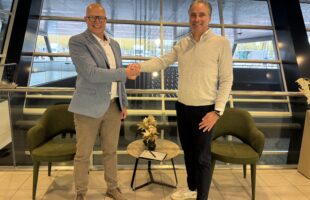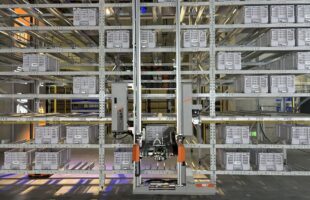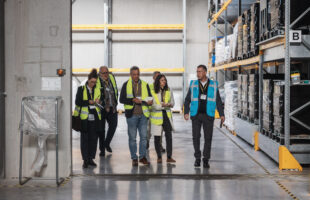
Courtesy of Liran Maimon
Forsea’s technology sets new industry standard, paving the way for affordable cultivated seafood production.
Rehovot, Israel–Cell-cultivated seafood innovator Forsea struck a major breakthrough in making freshwater eel farming a viable commercial reality. The start-up announced its organoid technology reached a record-breaking cell density of more than 300 million cells/ml, and with minimal and precise use of cultured media ingredients.
This is the highest cell density recorded in the field, moving Forsea to the forefront of cultured seafood production efficiency. The landmark technology allows for a scalable and highly cost-effective supply of the hugely popular traditional Japanese delicacy, eel (unagi) whose availability has been significantly hampered by overfishing and the destruction of aquatic ecosystems.
Eel is big in Japan
Forsea is currently focusing on manufacturing cultured freshwater eel due to the immense market potential, particularly in Japan. As the world’s largest consumer of eel, Japan recorded sales of 140,000 tons in 2023—50 percent of total global sales. The traditional Japanese dish unagi (eel) is considered a premium delicacy, prized not only for its rich flavor and tender texture but also because of its rarity. Freshwater eel is endangered and cannot be commercially bred in captivity. Demand for eel far surpasses the industry’s current supply capabilities, translating to skyrocketing prices.
Better, faster, and economical
Setting a new standard for “blue ocean” initiatives, Forsea created a new approach to cell-cultivating fish tissues outside of their native water habitats via organoid technology. Forsea’s patent-protected platform involves creating the ideal environment for animal cells to spontaneously assemble into three-dimensional tissue structures with their natural composition of fat, muscle, and connective tissue.
This method not only echoes the natural growth process of these tissues in a living animal, giving it a closer-to-nature edge, it bypasses the scaffolding stage and is dramatically less dependent on expensive growth factors. This makes the process highly affordable and positions its cell-grown version to price parity (or potentially lower) with traditional aquafarmed eel, a key challenge the cell-based industry was desperate to overcome.
Ample affordable cultivated eel not oceans away
“The breakthrough to this level of cell density highlights the strength of our organoid technology,” exclaims Moria Shimoni, CTO of Forsea. “It’s a validation of our approach to high-efficiency cultivation of seafood to meet both economic and sustainability goals at scale”.
After completing its proof-of-concept continuous harvesting process, Forsea reports it is ready to take production of its cultured fish products to the next phase of commercial scale-up.
“Forsea’s organoid technology requires less capital expenditure than other technologies,” explains Roee Nir, Founder and CEO of Forsea. “Achieving this level of cell density with minimal resources will translate to substantial reductions in the unit of economics and will bring cultured seafood production to a cost that is actually below the traditional market price. This is major milestone for Forsea and validates our vision of making sustainable, high-quality seafood affordable and widely accessible. It also sets a powerful precedent for scaling other cultured seafood products and establishing sustainable alternative supply chains for ecologically sensitive species.”
Forsea’s cell-cultured eel is expected to ease the strain on the world’s eel populations and reduce the environmental impact of traditional eel farming. This encompasses reducing global warming potential, water consumption, and land use and alleviating pressure on marine ecosystems by focusing on endangered species.
“Our recent industry survey shows that cultivated meat production is definitely not a one-size-fits-all approach,” says Elliot Swartz, Principal Scientist Cultivated Meat, GFI. “It’s encouraging to see positive data from companies showing how different methods can address challenges in cost and scale. I’m especially pleased to see a GFI research grantee, Dr. Iftach Nachman, help a startup pioneer new ways of cultivating meat. This is a great example of how foundational open-access science enables and makes possible follow-on work by the private sector.”
The company is preparing for commercial launch of its unagi product in 2026. Earlier this year, Forsea held a successful tasing event at the reputable ‘a’ restaurant in Tel Aviv, where it served the world’s first cultivated unagi kabayaki—grilled fresh eel on a bed of aromatic rice—receiving rave reviews. Among the tasters where representatives from the Japanese embassy and various Japanese food companies based in Israel.
About Forsea
Forsea was founded by biotech engineer Roee Nir, MBA; Moria Shimoni, PhD; Iftach Nachman, PhD; and Yaniv Elkouby, PhD, with support from the Israeli Innovation Authority (IIA) and The Kitchen Hub. It has garnered seed backing from Target Global, PeakBridge VC, Future Food Fund, Zora Ventures, FoodHack, and M&H Ventures. Forsea’s organoid approach to cultivating fish tissue involves creating an ideal environment for fish cells to spontaneously form their natural composition of native fat and muscle. They grow as a three-dimensional tissue structure, just as in nature.








